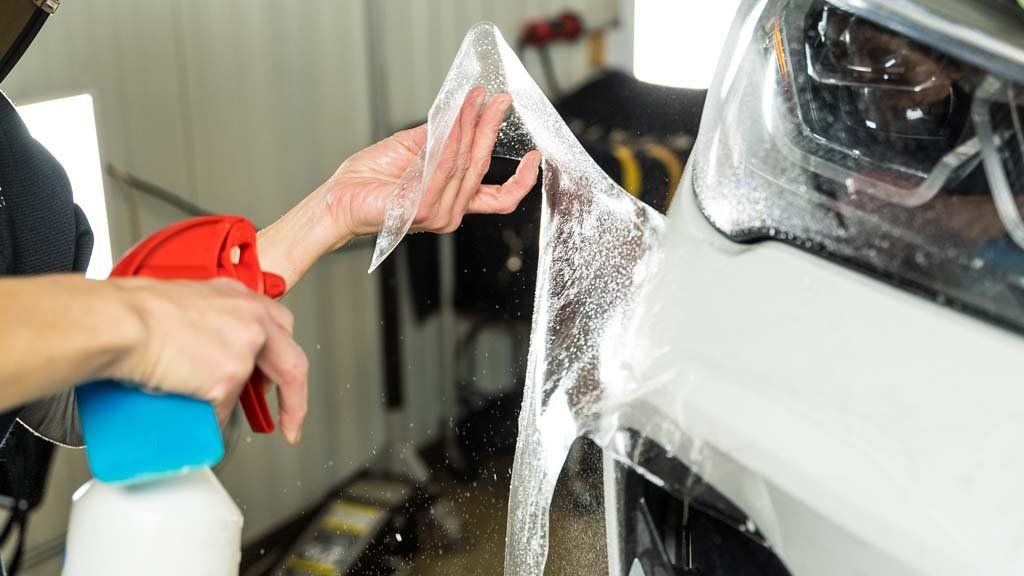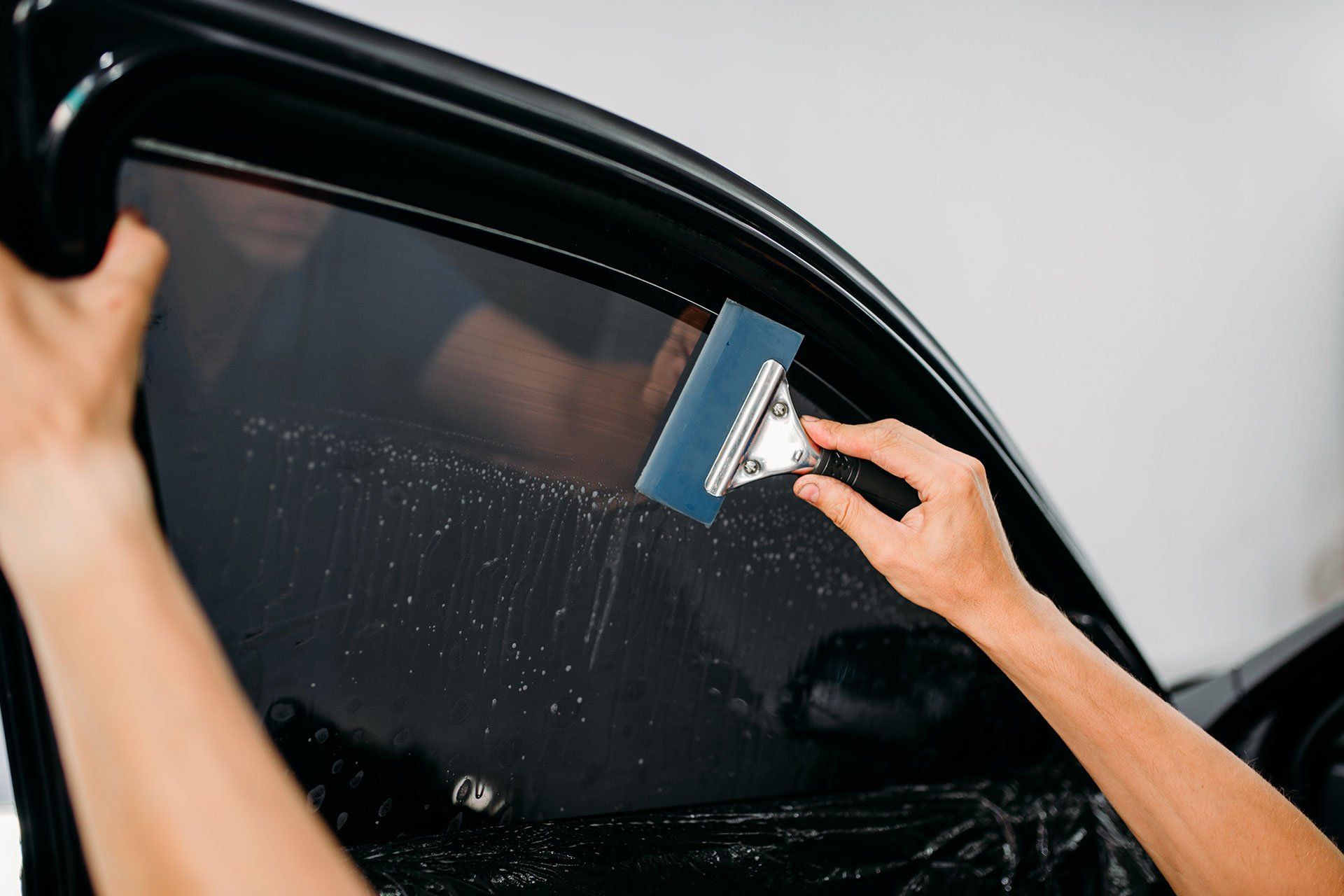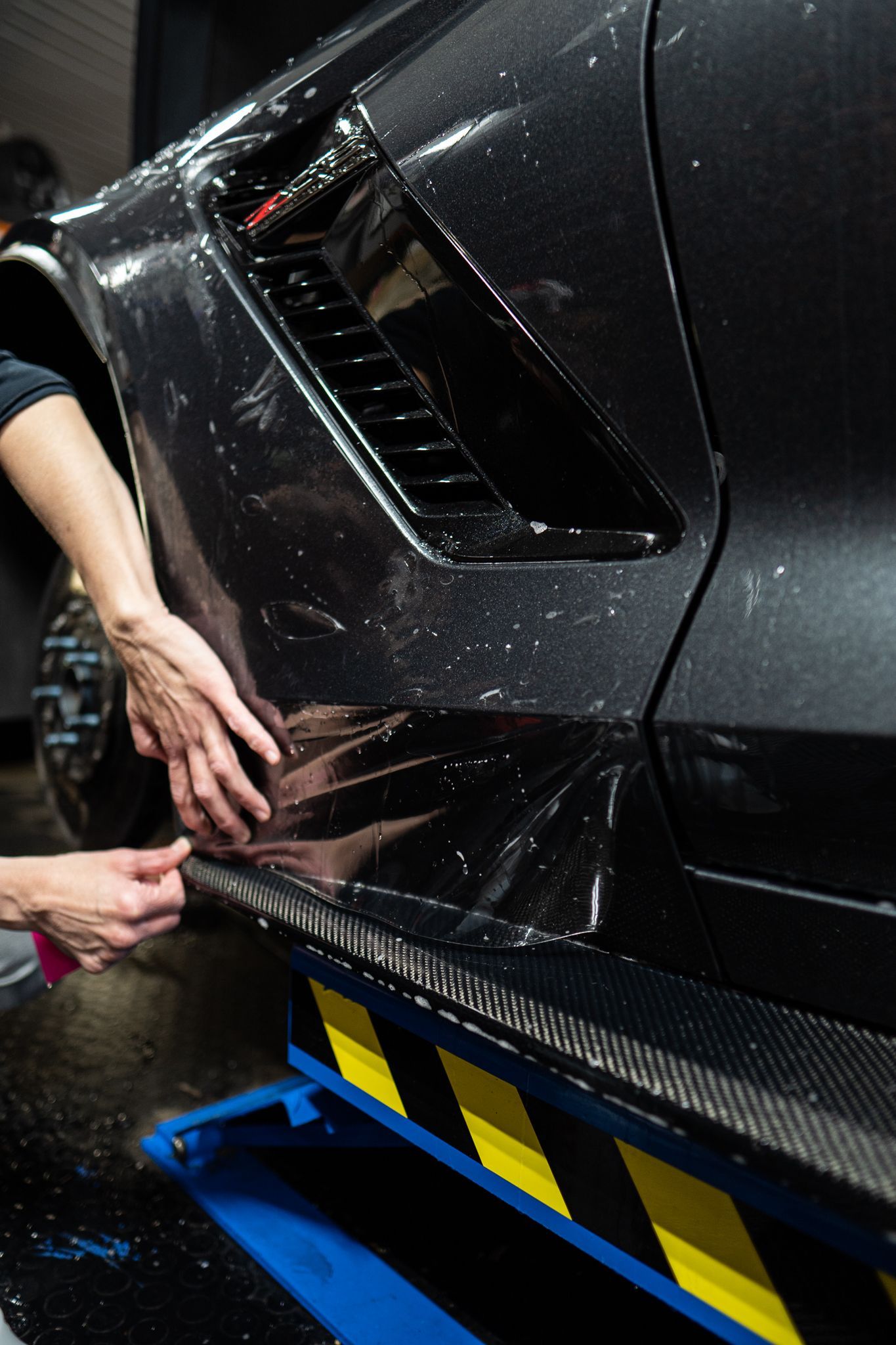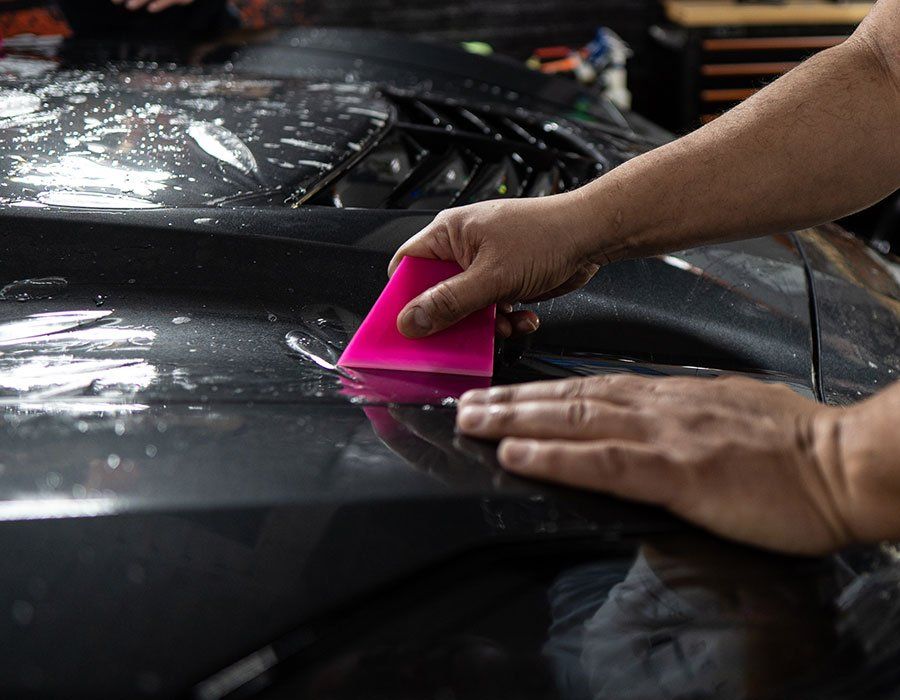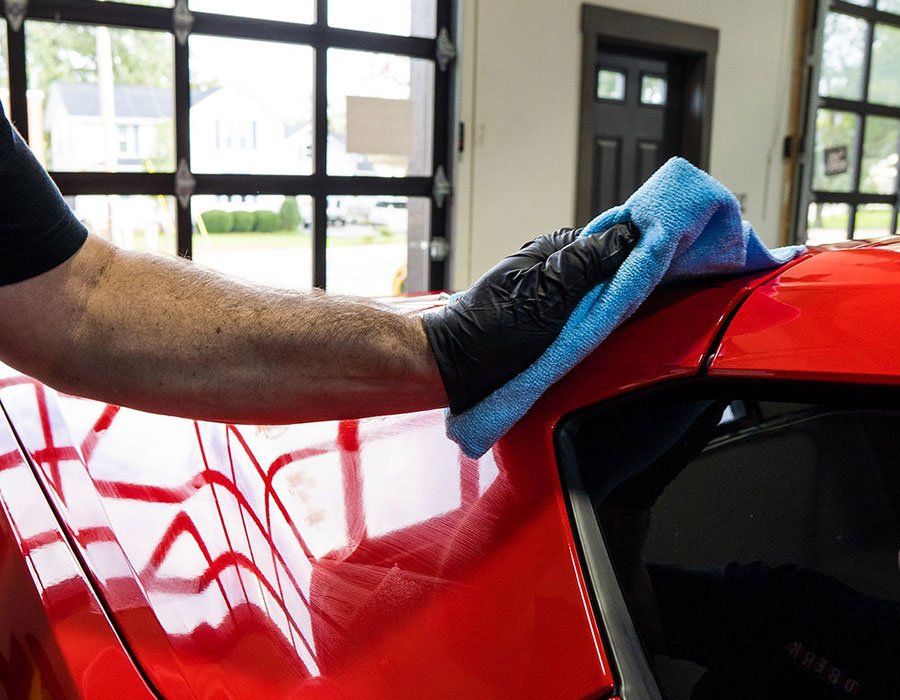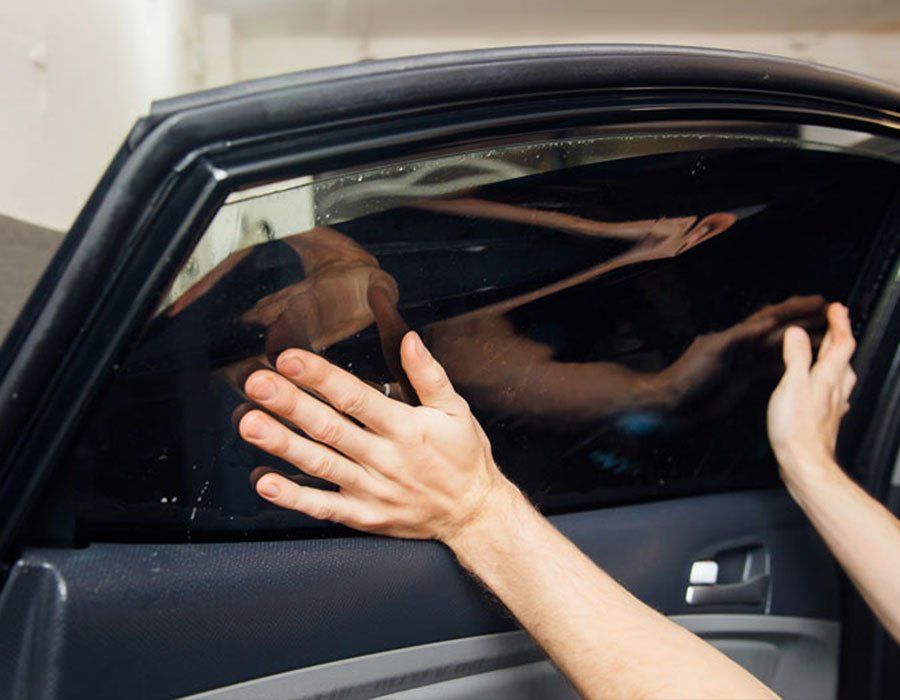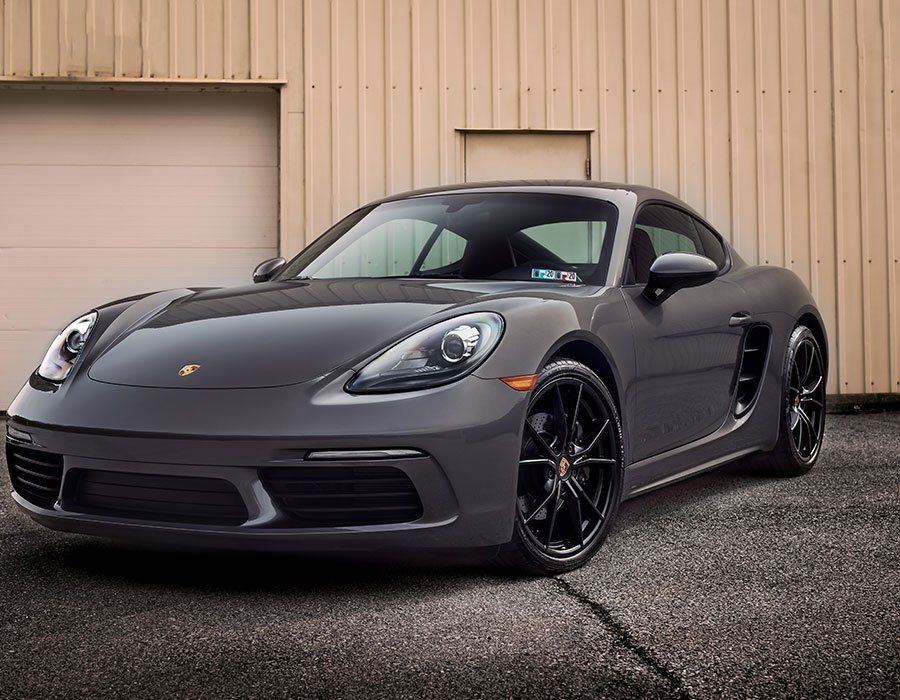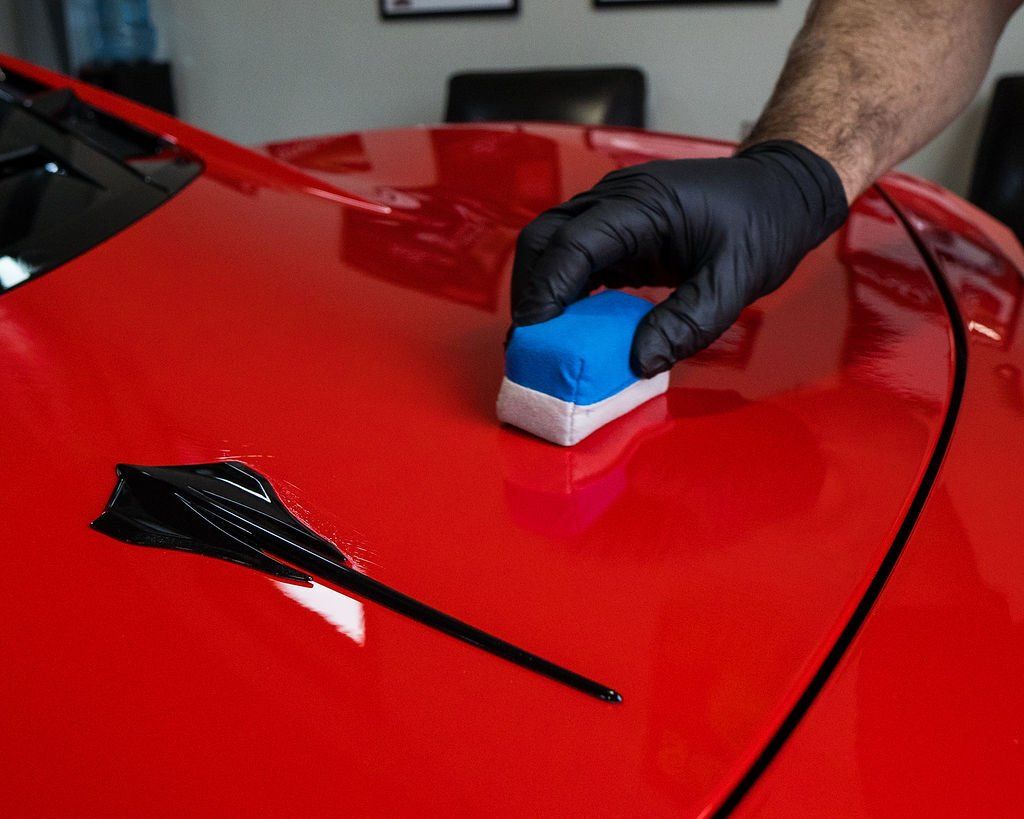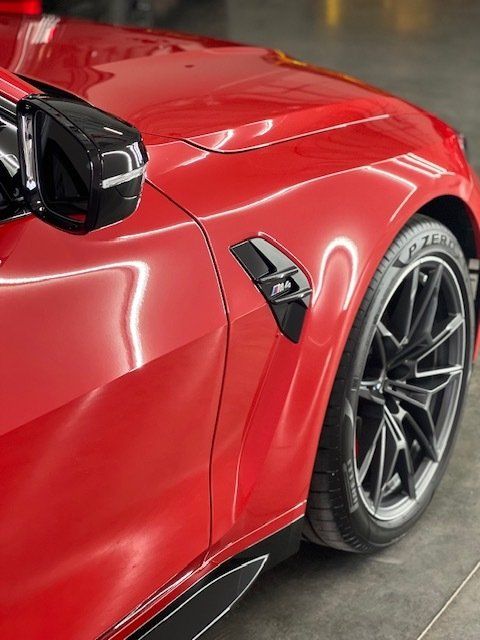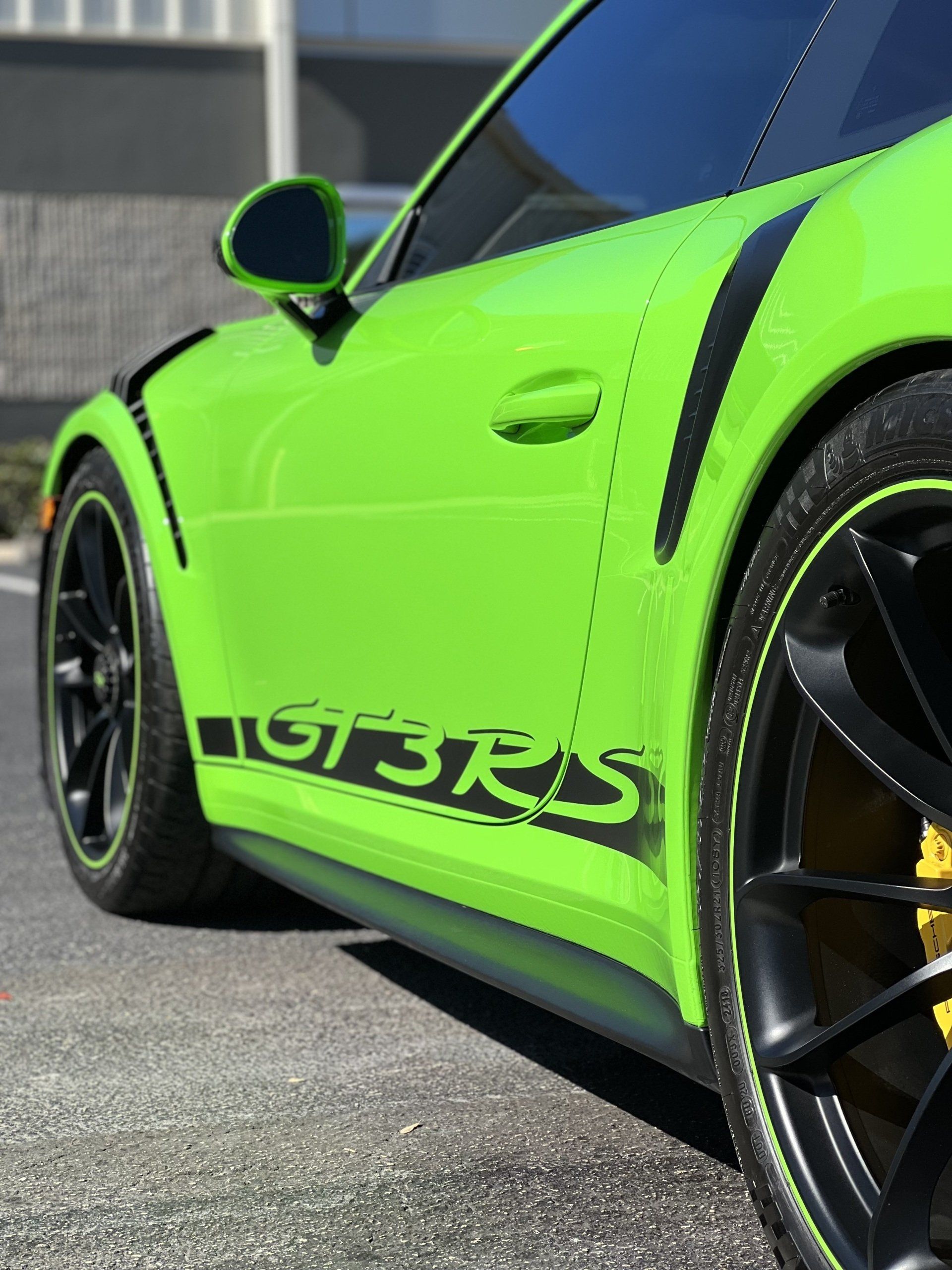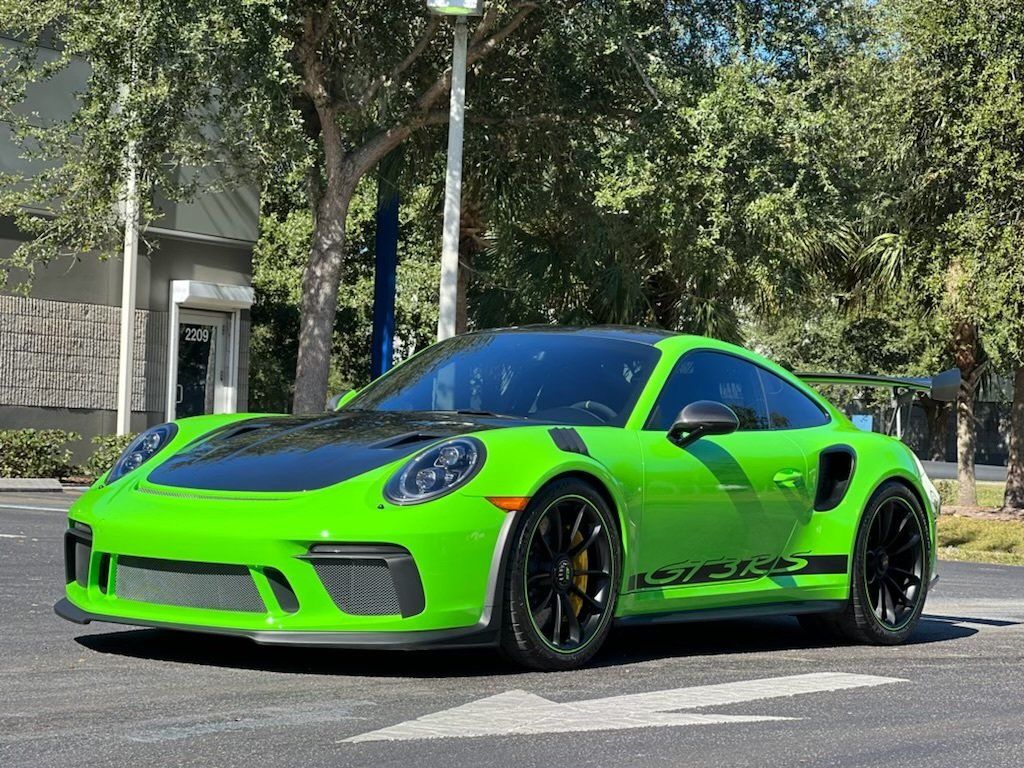Ceramic Coating Lifespan: How Long Does It Last and Is It Worth the Investment?
CALL (727) 940-2340
SCHEDULE NOWA car's ceramic coating lifespan varies widely. Longevity often hinges on the quality of application, with specialized and skilled application usually ensuring a more durable result. However, it is not the only factor at play. Atmospheric conditions, how frequently the car is cleaned, and methods employed for maintenance can also significantly influence the lifespan. This makes it even more crucial to care for your car after applying the ceramic coating.
Ceramic car coatings typically have a lifespan ranging from 2 to 5 years, although some high-quality formulations can endure for up to a decade with proper maintenance and care. It is essential to ensure regular cleaning and avoid harsh chemicals or improper polishing methods to maximize the coating's longevity.
Factors That Affect Ceramic Coating Lifespan
When it comes to preserving your car's exterior with a ceramic coating, the longevity of this protective layer is influenced by several key factors. Let's closely examine them to empower you with the knowledge to make informed decisions about your investment.
Quality of Application
The application process is foundational to your coating's lifespan. A professional and skilled application typically ensures a longer-lasting result. Proper surface preparation before application is crucial, involving thorough cleaning, decontamination, and polishing to ensure that the coating adheres effectively to the paintwork. Experience and attention to detail play a pivotal role in achieving a high-quality, long-lasting finish.
This extends beyond just the expertise of the applicator. The quality and type of ceramic coating used also contribute to its durability. High-quality coatings tend to be more resilient and have enhanced protective properties. Therefore, it's essential to choose a reputable brand known for producing reliable ceramic coatings. The quality of the application, coupled with the standard of the product itself, forms the cornerstone of an enduring ceramic coating.
Environmental Conditions
Environmental factors are significant determinants of how long a ceramic coating will last. Exposure to extreme weather, including UV radiation, can lead to the degradation of the coating. Furthermore, frequent contact with salt or sand, commonly encountered during the winter months or near coastal regions, can accelerate wear and tear on the ceramic layer.
To safeguard your coating from these elements, consider parking your vehicle in covered areas whenever possible and avoiding prolonged exposure to direct sunlight as much as possible.
Maintenance
Regular and proper upkeep can significantly impact the durability of the ceramic coating. By following manufacturer recommendations for maintenance and using appropriate cleaning techniques and products, you can preserve the coating's protective properties for an extended period of time. For example, washing your car with clean water and using a microfiber wash mitt instead of abrasive tools prevents unnecessary abrasion that can compromise the ceramic layer over time.
Driving Habits
Your driving habits also play a crucial role in determining how long your ceramic coating will last. Aggressive driving, frequent long trips, and rough road conditions contribute to wear and tear on the coating. These conditions subject your vehicle's exterior to an increased risk of damage from debris and contaminants, which can diminish the efficacy of the ceramic coating over time. While it's true that normal wear and tear is inevitable, mindful driving habits can certainly help prolong the life of your ceramic coating.
Understanding these influential factors gives you an insight into how to protect your investment and maximize the lifespan of your car's ceramic coating.
Different Types of Ceramic Coatings and Their Lifespan
When it comes to ceramic coatings, it's essential to choose the right type based on your specific needs and expectations. Here are the three main categories of ceramic coatings, along with their anticipated lifespans.
Consumer-Level Coatings
Most commonly found in retail stores or online marketplaces, consumer-level ceramic coatings are designed for ease of application by car enthusiasts or hobbyists. These coatings typically last for 1-2 years before requiring reapplication, offering benefits such as enhanced hydrophobic properties, UV protection, and improved scratch resistance. An example of a consumer-level ceramic coating is Cquartz 3.0, which is a popular choice among DIY car care enthusiasts.
Trained, Certified Coatings
For those seeking enhanced durability and performance, trained and certified professionals offer ceramic coatings with a longer lifespan, typically ranging from 3-7 years. These coatings are professionally applied and often come with a warranty, providing peace of mind regarding their longevity and effectiveness. An example of this category is Cquartz Pro/Finest, known for its advanced formulation and extended protection.
Lifetime Warranty Coatings
For vehicle owners who prioritize long-term protection and are willing to commit to regular maintenance, there are ceramic coatings that come with a lifetime warranty. These coatings require periodic reapplication every 6 months to a year to maintain their effectiveness over time. An example of a lifetime warranty ceramic coating is Ceramic Pro, renowned for its comprehensive protection and ongoing support.
While lifetime warranty coatings may require more frequent attention compared to other types, they offer unparalleled peace of mind and long-term safeguarding for your vehicle's surfaces. The added assurance of a lifetime warranty can be a compelling factor for those looking for sustained protection against environmental elements and wear.
When considering the different types of ceramic coatings available, it's essential to weigh the trade-offs between lifespan, initial investment, maintenance requirements, and long-term benefits. Each category offers distinct advantages tailored to diverse preferences within the automotive care community. By understanding the characteristics of each type, vehicle owners can make informed decisions regarding the most suitable ceramic coating for their specific needs and aspirations.
Benefits and Drawbacks of Ceramic Coating
Ceramic coating your car may sound like a dream come true—protection from UV rays, chemical stains, and oxidation. Enhanced gloss and improved depth in the paintwork? It almost sounds too good to be true. But as with most things in life, there are drawbacks to consider as well.
Looking at the bright side, ceramic coating provides unparalleled protection for your car's surface. The strong barrier it creates acts like a shield against harmful UV rays, preventing your car's paint job from fading due to sun exposure. Moreover, it's effective in repelling chemical stains that could potentially harm your vehicle's exterior. And a bonus: the enhanced gloss and depth in the paintwork really do make your car look stunning.
Imagine driving through rain or puddles without a worry in the world—that's the power of hydrophobic properties offered by ceramic coatings. The water just beads up and rolls right off, leaving your car looking cleaner for longer periods of time.
But let’s pause for a moment and consider the flip side of the coin.
The initial cost of ceramic coating application is quite high, especially for professionally administered coatings. It's an investment for sure, but one that can create long-term benefits given its durability. Another aspect to ponder over is the limited repair options. If there's damage to the coating, it has to be removed entirely before any repairs can be made, which can be both time-consuming and costly. Improper application is also a cause for concern; if not done correctly, it can result in visible streaks and marks on the car’s surface, which kind of defeats the purpose of getting a glossy finish.
So while ceramic coating certainly offers a myriad of benefits that make it an attractive choice for many car owners, it’s important to weigh in these drawbacks as well when making a decision.
Maintenance Tips for Ceramic Coating
Congratulations on your decision to invest in a ceramic coating for your car! Now that you have this protective layer, it's important to take care of it properly so it can do its job effectively. Here are some expert tips to help you maintain the integrity and longevity of your ceramic coating.
Use Gentle Cleaning Techniques
It's crucial to handle your coated vehicle with gentle care to avoid shortening the lifespan of the ceramic coating. Harsh chemicals and abrasive tools can wear out the coating prematurely and compromise its protective properties.
When cleaning your car, be sure to use a pH-neutral car wash soap designed for use on coated surfaces. Avoid using abrasive materials or harsh chemicals that could cause damage. Opt for soft microfiber towels instead of rough sponges to prevent scratches. By using gentle cleaning techniques, you can effectively remove dirt and grime without compromising the integrity of the ceramic coating.
Regular Washes
In order to preserve the coating's effectiveness, it's essential to incorporate regular maintenance into your routine. Frequent washing with clean water and a mild soap not only helps to maintain the appearance of the coating but also prevents dirt and contaminants from bonding to the surface, extending the life of the ceramic coating. The presence of contaminants can degrade the coating over time, making regular washes an important part of maintaining its protective properties.
Avoid Machine Polishing
Machine polishers are powerful tools that can inadvertently inflict harm on your ceramic coating.
Opting for hand polishing over machine polishing is highly recommended when caring for a vehicle with a ceramic coating. Machine polishers can generate excessive heat and friction, potentially damaging the protective layer and diminishing its longevity. To protect your investment, choose gentle hand polishing methods when necessary to maintain both the appearance and efficacy of the ceramic coating.
By incorporating these maintenance tips into your ongoing care routine, you will ensure that your ceramic coating continues to provide long-lasting protection and aesthetic benefits for your vehicle.
Maintaining the longevity and effectiveness of your ceramic coating requires dedication and knowledge. Now, let's shift our focus to maximizing your investment in this invaluable protective layer.
Maximizing Your Ceramic Coating Investment
So, you've decided to invest in a ceramic coating for your vehicle and now want to ensure that this investment pays off to the fullest. Here are some key steps to help ensure your ceramic coating lasts as long as possible and maintains its protective properties over time.
Follow Manufacturer's Recommendations
Ceramic coating products come with specific guidelines from the manufacturer, based on extensive testing and research to ensure longevity and effectiveness. Thoroughly read and understand these guidelines, as they provide crucial information about proper application, curing times, and maintenance routines.
By following the manufacturer's recommendations, you'll be able to maximize the lifespan of your ceramic coating and maintain its optimal protective qualities. These may include specific washing instructions, recommended maintenance products, and other essential details to preserve the integrity of the coating.
Apply Additional Layers
While ceramic coating provides a durable layer of protection for your vehicle's paint, it's not indestructible. Over time, environmental factors such as UV exposure and contaminants can gradually wear down the coating. To extend the lifespan of your ceramic coating, consider applying additional layers or a topcoat every 1-2 years.
Adding an extra layer of ceramic coating or a refresh coating can revitalize the protection and hydrophobic properties of the original application. This proactive approach helps safeguard against wear and tear, ensuring that your vehicle maintains a high level of paint protection for an extended period of time.
Parking Considerations
Where you park your vehicle can significantly impact the longevity of your ceramic coating. Whenever possible, try to park in sheltered areas to minimize exposure to harsh elements such as intense sunlight, heavy rainfall, and corrosive environmental pollutants.
Excessive exposure to UV radiation can accelerate the degradation of ceramic coatings, leading to diminished performance over time. By parking in shaded or covered spaces, you can reduce the amount of direct UV exposure on your vehicle, ultimately prolonging the life of the ceramic coating.
Adhering to these best practices will help you make the most of your ceramic coating investment. By following the manufacturer's recommendations, considering additional layers, and being mindful of parking environments, you'll ensure that your ceramic coating continues to provide superior paint protection for an extended period of time.
When to Replace Your Ceramic Coating
Ceramic coatings for cars are engineered to be durable and long-lasting, but they aren't invincible. The need for replacement varies depending on several factors, such as the type of ceramic coating used, how well it was maintained, and the environmental conditions it's exposed to. Typically, a well-maintained ceramic coating can last between two and five years, sometimes even up to a decade in rare cases. However, as time goes by and the elements take their toll, signs start to show when your ceramic coating needs some attention.
One of the key signs to watch out for is reduced water beading on the surface of your car. Water beading is when water droplets form small beads rather than spreading out and forming a film on the surface. This effect is an indication that the ceramic coating is still providing strong hydrophobic protection. If you notice that water is no longer beading up as effectively as before, it might be time to consider recoating your car.
Another indicator that your ceramic coating may need replacement is diminished gloss or shine on the surface of your vehicle. Ceramic coatings are designed to enhance and maintain the glossy appearance of the car’s paintwork. If you find that the glossy sheen has noticeably decreased, it could indicate that the ceramic coating has worn down and isn't providing the same level of protection as before.
Additionally, an increased difficulty in cleaning your car can also be a red flag. Ceramic coatings make it easier to clean your car. It allows dirt, grime, and even bugs to slide off more easily. If you find that it's becoming more challenging to remove these contaminants from your vehicle, it could mean that the ceramic coating has deteriorated and may need to be replaced.
Factors Affecting Ceramic Coating Lifespan
Factors such as extreme weather conditions, the use of harsh chemicals during washing, improper washing methods, and polishing the exterior of the vehicle can all contribute to faster wear and tear of the ceramic coating layer. For instance, frequent exposure to harsh sunlight can cause the coating to degrade faster.
In essence, regular maintenance and adhering to proper care practices play a crucial role in extending the lifespan of your ceramic coating. Following recommended washing techniques, like using the two-bucket method and avoiding automatic car washes with harsh chemicals, can significantly prolong the life of your ceramic coating.
Ultimately, when you start noticing these warning signs, it's important not to delay taking action. Eventually, all ceramic coatings will need to be replaced—one unavoidable truth—and knowing when will go a long way in maintaining both the appearance and protection of your car’s paintwork.
Keeping an eye out for these telltale signs helps ensure that your car maintains its protective layer and glossy finish over time. Remember, regular maintenance is key to maximizing the benefits of ceramic coatings.
First-rate Ceramic Coating Specialists in Tampa, FL
In search of superior ceramic coating services for your vehicle in Tampa, FL? Look no further than Auto Film Guys, your trusted destination for first-rate protection and enhancement. Our team of specialists is dedicated to delivering unmatched quality and durability with our ceramic coating solutions. Using cutting-edge technology and premium products, we provide a long-lasting shield against environmental contaminants and UV damage, keeping your car looking pristine for years to come. Say goodbye to frequent waxing and hello to effortless maintenance with our premium ceramic coatings. Trust Auto Film Guys to safeguard your investment and preserve its beauty. Contact us today to schedule your appointment and experience the difference our expertise can make!
The Auto Film Guys Blog
